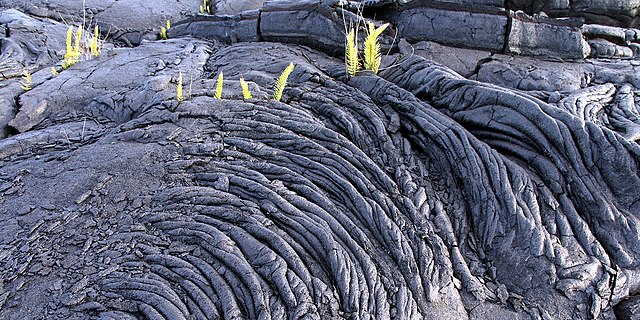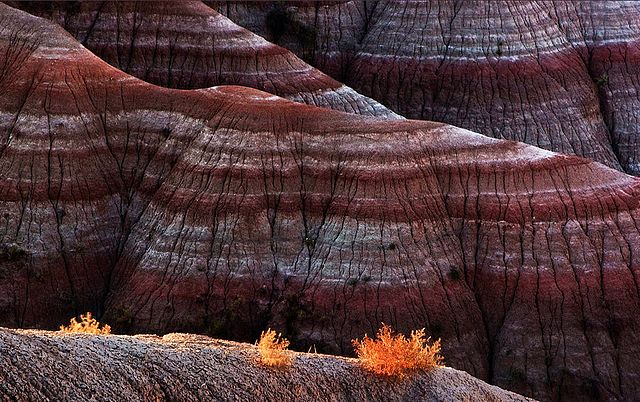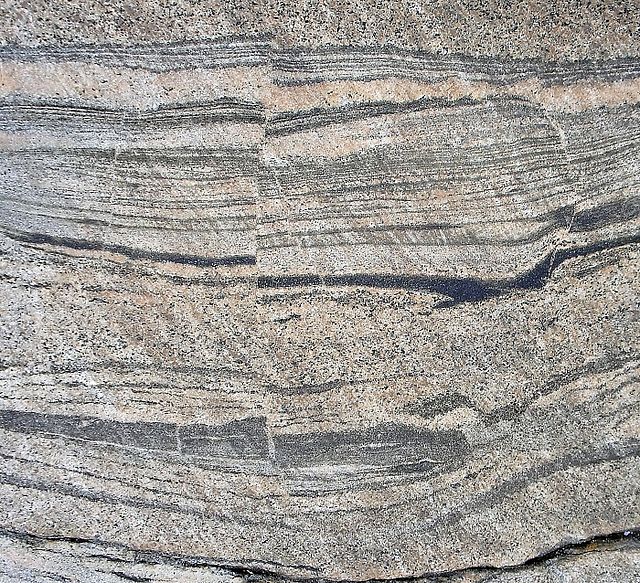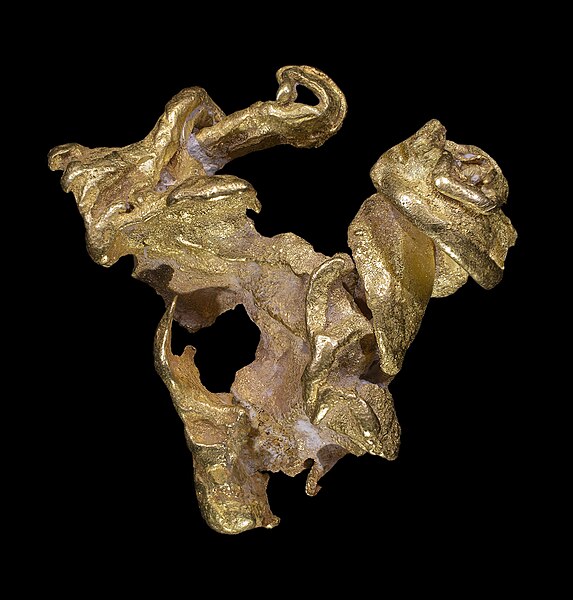In geology, a dike or dyke is a sheet of rock that is formed in a fracture of a pre-existing rock body. Dikes can be either magmatic or sedimentary in origin. Magmatic dikes form when magma flows into a crack then solidifies as a sheet intrusion, either cutting across layers of rock or through a contiguous mass of rock. Clastic dikes are formed when sediment fills a pre-existing crack.
A magmatic dike (vertical) cross-cutting horizontal layers of sedimentary rock, in Makhtesh Ramon, Israel
A dike of lamprophyre near the Shiprock volcanic plug, New Mexico, that has resisted the erosion that removed some of the softer rock into which the dike was originally intruded
A composite dike in Orkney, Scotland, with bostonite margins and a camptonite center
Sheeted dikes of the Lizard complex, Cornwall, England
Geology is a branch of natural science concerned with the Earth and other astronomical objects, the rocks of which they are composed, and the processes by which they change over time. Modern geology significantly overlaps all other Earth sciences, including hydrology. It is integrated with Earth system science and planetary science.
Solidified lava flow in Hawaii
Sedimentary layers in Badlands National Park, South Dakota
Metamorphic rock, Nunavut, Canada
Native gold from Venezuela








